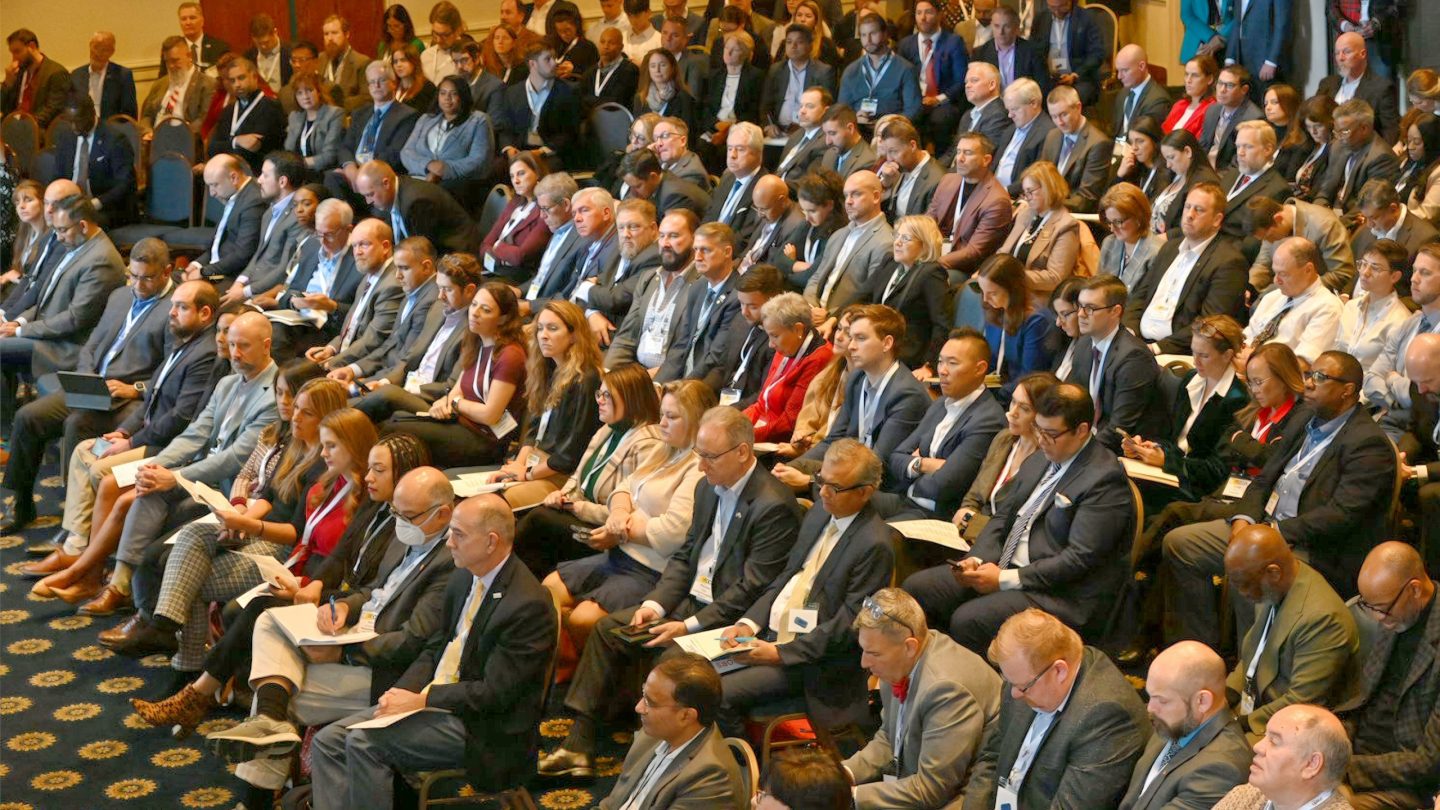Appears In
Why We Serve
People who join the United States military willingly sacrifice to serve our nation. They undergo rigorous training, endure long separations from loved ones, and often run towards danger to abide by their oath to “protect and defend” the Constitution of the United States. Their courageous commitment is the basis of President Lincoln’s promise to “care for those who have served in our nation’s military and for their families, caregivers, and survivors.”
Today, the Department of Veterans Affairs (VA) is one of the nation’s largest benefits providers, offering earned services that help millions of Veterans receive housing, health care, education, training, or final honors. VA’s National Cemetery Administration (NCA), which is celebrating its 50th anniversary, delivers final tributes. Since 1973, NCA has ensured Veterans, service members, and their families a final resting place that pays tribute to their service. This benefit includes Veteran headstones, markers, and medallions to commemorate a Veteran, service member, or their eligible family member.
In 2019, VA launched the Veterans Legacy Memorial (VLM), the nation’s first digital platform to memorialize these individuals. To launch the site, NCA partnered with VA’s Office of Information and Technology (OIT), beginning with static Veteran pages that displayed military service information and resting place details. Today, VLM has grown into an interactive platform hosting nearly 10 million individual Veteran memorial pages where users can post pictures, videos, stories, or chats to honor and remember them.
A Significant Digital Expansion
Led by NCA Digital Services Officer James LaPaglia, VLM’s partners include OIT Product Managers William Rodgers and Erin Fincham and Nicholas Lins from OIT’s Business Integration and Outcomes Service (BIOS). Using a rigorous Veteran-centric approach, the team directs OIT development and vendor staff on the steps required to enhance VLM’s capabilities. NCA’s and OIT’s unwavering commitment to excellence drives the teams’ success because they each know how important VLM is to its users.
“This has been a relationship-building process for us from the beginning,” Rodgers says. “And we make sure our staff understands what must work and why, and if it’s not fixed, it’s a deal breaker for any release. Luckily, our teams know what’s required and its impact on our users, and we’ve succeeded because we’re all in for VLM.
“Everyone’s invested in VLM’s success whether we’re investigating new data sources or identifying which data get placed at the top of a profile list due to the disparate databases across the enterprise we use to populate VLM.”
LaPaglia enthusiastically agrees. “I can’t say enough about our partnership between NCA and OIT,” he said. “It might be the best in VA, and it’s one of the best success stories within the enterprise because of how OIT has leveraged its IT work to make the customer experience something special and deeply meaningful.”
More than 75,000 tributes, photos, and other items have been posted on VLM since the site initially launched. VLM currently has Veterans interred in VA’s national cemeteries, VA-grant funded cemeteries, 27 Department of Defense-managed cemeteries, most of the National Park Service national cemeteries, and now thousands of private and other non-VA cemeteries.
This recent enhancement, which VA announced on Nov. 2, 2023, added nearly five million new pages on VLM in an effort OIT delivered to NCA one year ahead of schedule. The effort has been on NCA’s development roadmap since the site launched in 2019. “We’ve always known we wanted to tap into our memorial products ordering system to include private cemeteries because we knew it was a gold mine of additional Veteran records for us to create digital tribute pages, and OIT gave us another scrum team this year so that we could accelerate our goal,” LaPaglia said.
The new team started in February 2023 and accomplished the goal in less than nine months. The effort was challenging, but the team was ready, willing, and able to succeed. “This new scrum team joined our already Varsity dev team and hit the ground running,” LaPaglia said. “Our collective NCA and OIT team is passionate about this project and its impact on Veterans, their families, and survivors.”
Meeting the Challenge
The accelerated development was demanding, but the teams met each challenge. The first obstacle was data variety. For example, a VA headstone and marker data records contain different and more information than VA medallion records, and even among VA headstone and marker records, the information on each record is not always the same. OIT aimed to capture as much data as possible to match VLM’s existing page template. To achieve that goal, OIT’s teams created at least six variations of the VLM profile pages to adjust for data variance to ensure users can easily find the Veteran memorial page they search for.
The next challenge was adjusting the search function to quickly capture what an individual has typed into the cemetery data field for the thousands of private cemeteries in VA’s Automated Monument Application System (AMAS). The teams found roughly half a million different iterations of cemetery names and solved the issue using two solutions. The first was to clean up the disparate data.
“We always want to start with as clean data as possible because we’ve learned that if we don’t, we’ll pay more for development later,” LaPaglia said. “OIT’s team did a magnificent job for this expansion thanks to our Ph.D. data scientist, Laura Bathurst. She and her team cleaned up approximately five million records we were ingesting to make it easier for survivors to search VLM for their loved ones.”
Next, OIT’s teams revamped VLM’s search engine from a dropdown menu where users initially could scroll through a few hundred cemetery sites. Due to the continuing expansion of VLM’s capabilities, the teams knew it would be too challenging to have users scroll through nearly 500 thousand cemetery names. The adjustment allows users to type in part of a cemetery name, automatically populating all the cemeteries that contain those words.
LaPaglia said the solutions OIT devised for the expansion are impactful. Rodgers agrees, citing how OIT’s teams had to import imprecise data and then normalize it into the VLM database so users could quickly find their Veteran or service member.
A Meaningful User Experience
Interest in VLM grows with each enhancement, and the teams say user engagement is vital to that success. To maintain viability and ensure appropriate content is on VLM, NCA and OIT have moderators who view each item individually before posting to verify the content conforms to VLM’s user policy and appropriately honors Veterans. Among prohibited items include political speech, advertising, or personally identifiable information. This individual attention helps ensure a meaningful end-user experience, LaPaglia says, and reflects the value NCA and OIT place on preserving Veteran legacies.
For Veterans by Veterans
A key component of VLM’s success is that it was built by Veterans for Veterans, including LaPaglia, Rodgers, Lins, and many NCA and OIT support team members. “We do this for the survivors, and it’s also for the deceased Veterans,” LaPaglia says. “It’s sobering to know that what we’re doing is for the millions of Veterans that we’ve loved and lost and their survivors. We’re personally invested, and I hear that emotion in the voices of our teams and others every time I talk about VLM. That’s why we do it.”
VA’s Assistant Secretary for Information and Technology and Chief Information Officer Kurt DelBene is one of VLM’s most ardent fans. He considers it one of the top web apps VA offers Veterans and their families. “OIT is proud to partner with NCA in enabling the addition of nearly five million new records to the Veterans Legacy Memorial database,” says Mr. DelBene. “This platform allows families and loved ones to pay tribute to Veterans dating all the way back to the Revolutionary War using today’s digital technology.”
The teams’ work continues, and recently, OIT helped NCA achieve a 508-conformance statement for VLM, a significant first for the site. The teams have also started a second round of formal user experience focus group testing with survivors, Veterans, historians, and researchers to ensure that proposed upgrades improve the user experience.
“User feedback is so important, and continuing to improve VLM for our users is what we strive for daily,” LaPaglia says. “Millions of Veterans still don’t have a VLM page yet, so our teams know there is more work ahead. Our hope is to eventually have a VLM page for every Veteran, no matter where they are laid to rest.”
Topics in this story
In this article






